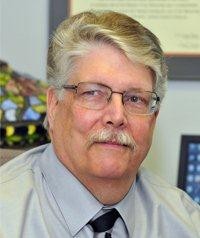Kansans have a new law, Senate Bill 443 creating the “Kansas State Cage Elevator,” an iron enclosure about eight feet on a side that sits at the southeast corner of the state capitol’s rotunda. There it has served untold numbers of Kansans traveling between the floors of the capitol building since 1923.
The accordion grate door, polished brass fittings, long black tension bearing cables, and all the rest constitute an early 20th Century exemplar of the massive over-engineering and heft that bespeaks eternal service. The cage elevator is a beauty, and although not yet rare, the law guarantees that barring destruction of the building, it will continue to serve until one day it may well be the “last of its kind, anywhere.”

It isn’t just commemoration of the elevator that matters in this enactment. There is more here in the language of the statute. In the legalistic, run-on writing of legislation with its declaratory “whereases” and conjunctive “; ands” there is a sort of Whitmanesque tribute to our glorious past. At a time when the future seems to threaten so many of us, there is comfort in the words of SB443.
The statute aims to draw the public’s attention, and most especially the attention of school children, to the state’s industrial heritage while they gaze at the elevator in the capitol’s rotunda.
Is this not in fact the great problem for Kansas? We have a poetic, justified, and nostalgic view of what went before – the brutal industrial beauty; its steadfast reliability and solidity; the touchstone quality so useful for idealizing the past. Who has the equally poetic, hopeful, and clear-eyed vision for the future?
The recognition of historic persons, places and events, the memorialization of the unique and unusual, the satisfaction of charmingly sincere requests from petitioning schoolchildren are common in state legislatures all across the country. Who would object to recognizing the fallen favorite son or the wistful writings of four decades duration by some sage beloved by the readers of a small-town weekly? What would Kansas be without “Home on the Range,” the Ornate Box Turtle, Western Meadowlark, Tylosaurus, or our famous folk — William Allen White, Amelia Earhart, Phog Allen, Alf Landon, and Walter Beech? Now we have a state statute to revere not only a thing but a concept as well.
Men (almost exclusively) once made good and proud livings working to produce the forged and formed parts and fittings of the Kansas State Cage Elevator. That is no longer the case.
Joseph Schumpeter, a noted market economist, called the process “creative destruction” — the fitful disruption and destruction of a productive activity with new or better technology or other market innovations that end the economic utility of one thing, replacing it with something else – think buggies and horsewhips replaced by automobiles, or computer-driven robotics replacing assembly-line workers in the Kansas City factories of GM and Ford. These disruptions have improved overall productivity, raised national and state GDPs, reduced consumer costs, and in general increased wealth. What they have not done is provide a path to a promising future for those displaced.
Should we not turn our attention to humanely managing the long de-population of the western counties that continue to shrink through emigration and micro-urbanization? Can we come up with techniques for sustaining public education, so very necessary for those who lack resources or options for privatized schooling, or must we instead endure unhelpful solutions like shortened school years? Can we shape a positive future, or will Kansas simply wallow in the sea of nostalgia until all the buoyancy is lost?
Dr. Mark Peterson teaches political science at the college level in Topeka.
